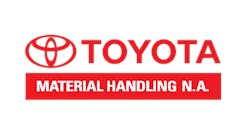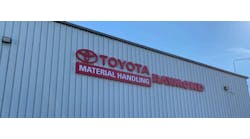Today's logistics professionals face many challenges, including compliance with a vast array of government regulations and the oversight of a wide spectrum of governmental agencies at both the state and federal level. This article highlights some regulatory and compliance issues you will want to keep in mind as the year progresses.
See Also: Manufacturing & Distribution Center Best Practices
Employment
The Equal Employment Opportunity Commission's (EEOC) oversight and enforcement activity has increased dramatically in recent years. The number of charges filed against private and public employers increased by more than 22% in the past decade. To live up to its mission to "stop and remedy unlawful discrimination," the EEOC recently approved its Strategic Enforcement Plan for Fiscal Years 2013-2016, adopting the following national priorities:
• Eliminating barriers in recruitment and hiring;
• Protecting vulnerable workers, including immigrants and migrants;
• Addressing emerging and developing issues;
• Enforcing equal pay laws;
• Preserving access to the legal system;
• Preventing harassment through systematic enforcement and targeted outreach.
Reflective of its plan, the Agency has implemented an initiative to scrutinize employer hiring and recruitment practices. This includes an assessment of pre-employment tests and background screening practices. As such, employers are discouraged from using employment applications that request detail regarding an applicant's age or past criminal activity.
The EEOC's Enforcement Guidance, published in 2012, strongly discourages the use of criminal history, especially pertaining to arrest records, when making hiring decisions. The EEOC's position is based on the premise that an arrest does not necessarily establish that criminal conduct has occurred. As such, an employer should be prepared to defend any denial of employment based on an applicant's arrest record on the basis that such decision is "job related and consistent with business necessity." A conviction record is generally sufficient evidence that an individual engaged in certain conduct; however, there may be exceptions to this premise as well.
If employment is denied based on an applicant's criminal history, the employer should be prepared to defend its position based on a corporate policy that takes into consideration the nature of the crime, the time elapsed from the time the crime occurred and the nature of the job.
The EEOC's recent $3.1 million settlement with an employer who allegedly screened out three hundred minority job applicants based on their criminal records illustrates the importance the Agency places on screening practices. It should be noted that employers can potentially be held accountable for the background screening practices of its temporary staffing labor provider.
Also, beware of using Facebook and other social media as a way of evaluating prospective employees. Even if hiring and/or firing decisions are not intentionally made based on information obtained through Facebook, such information is likely to be perceived as protected. The NLRB acting general counsel, Lafe Solomon, recently highlighted the NLRB's emphasis on cases involving social media policies and arbitration provisions, which may include assessments of personnel policies and employee handbooks.
Employers in border states should be particularly aware of the EEOC's vulnerable worker protection initiative. Disparate pay, job segregation, and discriminatory language policies as such pertain to migrants and immigrants are all subject to scrutiny by the Agency. In addition, the EEOC will continue to review employee leave policies. Compliance with Family and Medical Leave (FMLA) practices is not necessarily sufficient. Employers must assess whether an employee that has taken a FMLA leave of absence might also be entitled to certain reasonable accommodation under the Americans with Disabilities Act.
Labor
In addition to the EEOC, the National Labor Relations Board (NLRB) has been extremely active. Two issues of specific emphasis have been NLRB's poster ruling and its proactive stance on union elections.
The poster rule would require the majority of employers to post a prominent notice in the workplace advising employees of their rights, including their rights to unionize, under the National Labor Relations Act. The effective date of the poster rule was originally designated to be January 31, 2012; however the U.S. Court of Appeals for the D.C. Circuit blocked the NLRB from issuing the poster rule. As such, the poster rule is delayed until the appeal has been decided.
The NLRB's election rule, which would significantly shorten the period for representation in the event of a union election, has also been temporarily suspended in light of litigation which ruled NLRB's election rule was invalid and unenforceable.
Recently, the constitutionality of the President's appointment of three members of the NLRB has been challenged on the basis that the appointments were made during a Congressional recess. On February 7, 2013, the U.S. Court of Appeals for the D.C. Circuit ruled that the President's appointments violated the Recess Appointments Clause of the Constitution. However, NLRB chair Mark Gaston Pearce has indicated that the NLRB will proceed with business as usual. The constitutionality of the recess appointments is currently at issue in more than a dozen cases at this time. Future litigation is likely which could potentially have an impact on NLRB rulings made since the recess appointments.
Transportation
On the transportation front, MAP-21, also known as the Moving Ahead for Progress in the 21st Century Act, was signed into law in July 2012, with full implementation effective in September 2014. The legislation establishes a national freight network and calls for the development of a national freight strategic plan, providing over $105 billion for fiscal years 2013 and 2014 for surface transportation programs, including road and bridge improvements, studies and enhanced technology. The law is anticipated to be an effective tool in supporting the Federal Motor Carrier Safety Administration (FMCSA) in accomplishing its mission of highway safety, with an emphasis on commercial vehicles such as large trucks and buses. Enforcement activity is likely to increase as the law provides $561 million in fiscal year 2013 and $572 million in fiscal year 2014 for FMCSA.
MAP-21 will require motor carriers currently required to maintain paper logs to transition to electronic logging devices (EOBRs), which are to be phased in within the next two years. A DOT clearinghouse will also be established to capture drivers' positive drug and alcohol test results as well as refusals to test. Motor carriers will be required to check the clearinghouse when screening new driver applicants and must continue to do so on an annual basis. It should be noted that third party hiring and/or screening services are permitted to perform this function on behalf of the carrier.
FMCSA will establish required standards for state systems that notify motor carriers of driver moving violations and driver record changes such as suspension in accordance with MAP-21. Motor carriers that are new to the industry will also be required to complete a safety regulation proficiency test. In addition, MAP-21 calls for DOT to evaluate the need for crashworthiness standards for large trucks.
MAP-21will also have a financial impact on freight forwarders and brokers, increasing the surety bond requirement from $10,000 to $75,000 for compliance with FMCSA's financial security requirements. It should be noted that motor carriers that also perform a brokerage service are required to obtain brokerage authority and so will be affected by this increased surety bond requirement.
HAZMAT
We'll all be seeing changes to the format and content of Material Safety Data Sheets (MSDS) in the near future as a result of OSHA's Hazard Communication amendment published in March 2012. The Amendment adopts several principles of the United Nations Global Harmonization Standard (GHS) which was adopted by the United Nations in 2003 as an international model for: (i) chemical hazard classification; (ii) hazardous chemical labeling; and (iii) safety data sheet (e.g., MSDS) formatting and content. The global harmonization standard is to be utilized on a worldwide basis in an effort to create greater uniformity, clarity and consistency among parties involved in the storage and handling of hazardous chemicals.
The Amendment identifies a specific format for MSDS and their content. Information to be included on MSDSs shall consist of the following: (i) identification of the supplier and the mixture/substance; (ii) hazard identification; (iii) composition/detail pertaining to the mixture/substance ingredients; (iv) first aid measures; (v) firefighting measures; (vi) accidental release measures; (vii) handling and storage; (viii) personal protection and exposure controls; (ix) physical and chemical properties; (x) stability and reactivity; and (xi) reactivity. It is also suggested, but not required, that ecological information, disposal considerations, transport information, and regulatory information be included on the MSDS.
Hazardous chemical labels are also addressed within the OSHA amendment. Labels will be required to include the following: (i) a signal word – either "Danger" or "Warning"; (ii) a statement that identifies the hazard presented by the chemical; (iii) one or more of eight unique standardized symbols that communicate the nature of the hazard; and (iv) an overview of manufacturer recommended actions for prevention or minimization of adverse exposure effects associated with the hazardous chemical. All hazardous chemical labels are to be offset with a red border to enhance visibility.
Training is also addressed within the OSHA amendment. All employees are to be trained on new labeling requirements and the updated safety data sheet format no later than December 1, 2013. However, use of and compliance with the labeling and safety data sheet standardization format will be phased in over an additional period of time.
Whether your challenges lay in human resources, warehouse management or transportation management, knowledge of these legal and regulatory issues is your first step to developing the strength to deal with them.
Ann Christopher is vice president and legal counsel for Kenco (www.kencogroup.com), a logistics service provider.




